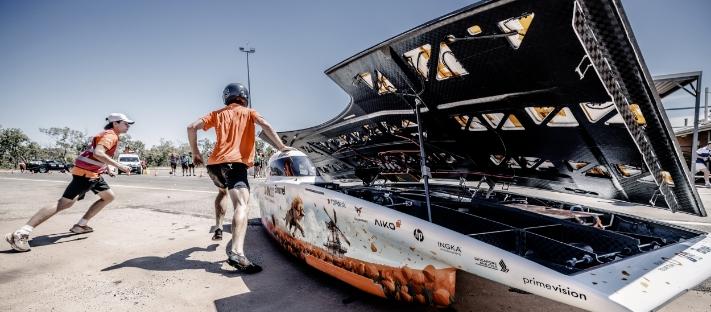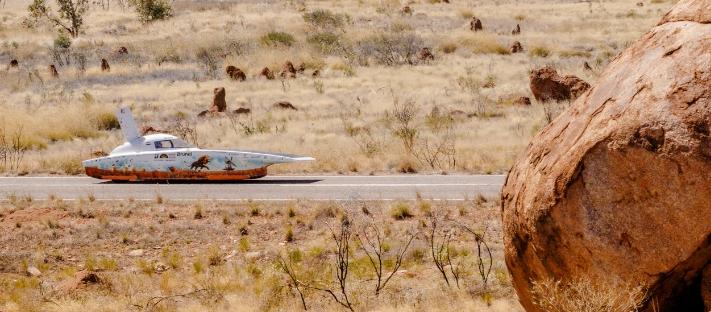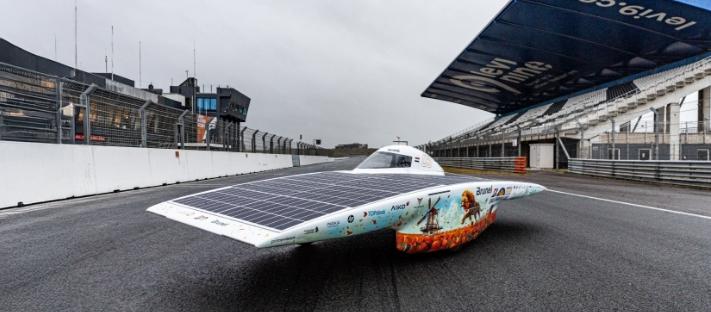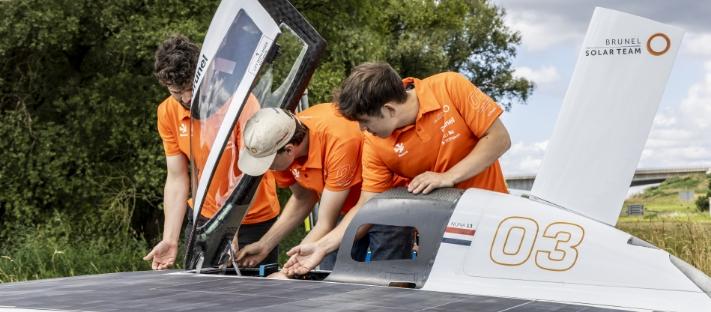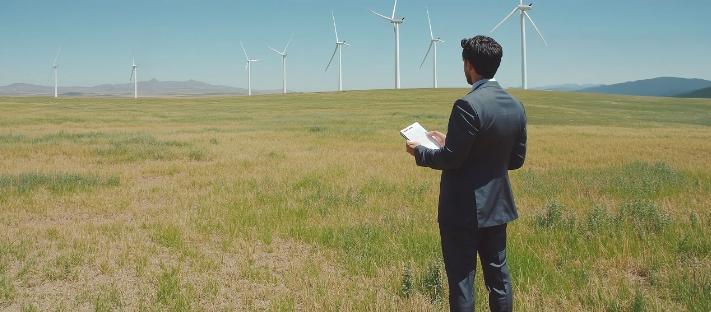Built on what came before
From early design notes to the final choice of fiber in the tire, this is how each decision shapes a solar car built for the Bridgestone World Solar Challenge
Legacy doesn’t live in titles or trophies. It is carried through decisions, passed from one team to the next. You find it in the past design drawings, each one a response to a challenge and an ambition to build what’s next.
At the Bridgestone World Solar Challenge, legacy is shaped through performance under real conditions. Each decision, from structural design to material choice, is exposed to heat, load, and long-distance wear. Student teams refine these decisions in context. Bridgestone uses the event to explore the limits of circular inputs. And fibers from Teijin Aramid play a supporting role by reinforcing the tire structure where strength and stability are critical. Together, these efforts help inform how future systems are built, tested in context, and refined through use.
Inheriting more than a name
Every September, a new group of students walks into the workshop and becomes the Brunel Solar Team. What they inherit isn’t a finished car, but a set of expectations shaped by two decades of race history and a long line of engineers who came before them. Nuna 13 is part of a lineage that began in 2001. But for many of its builders, the story started long before they were selected for the 2025 team.
“I remember sitting with my mom, watching the children’s news when the Brunel Solar Team won again. She turned to me and said, ‘Maybe you’ll study in Delft one day.’ Realizing that dream was one thing. I never imagined I’d be part of the (Brunel) team.”
Jans van den Nobelen, Partnerships team
The team doesn’t start from a clean slate. From the first week, every choice is weighed against a single question: will it help us win? Decisions on weight, safety margins, data systems, and race strategy are shaped by that goal and by the experience of the teams that came before.
The Brunel Solar Team picks up where others left off. They work with past designs, test what still holds, and change what does not. Their decisions shape the car and set new demands for every part of it. This is where Bridgestone plays a role, developing tires that are expected to perform more precisely, under greater pressure, with less room for compromise.
Expertise is just the starting point
Bridgestone could easily treat the Bridgestone World Solar Challenge as simply a branding exercise. With decades of experience in motorsport and a global reputation for high-performance tire technology, its position is already secure. Instead, they use the event as a testing ground.
This year, that approach shaped a new generation of tires with ENLITEN™ technology. The 2025 versions include recovered carbon black, recycled steel, and, for the first time, aramid fiber made with circular content. The result is a solar car tire with over 65% recycled and renewable material content, designed to perform under extreme conditions.
“We don’t treat this challenge as a showcase. We treat it as a challenge. Can we take materials that no one has used in this way before and trust them over 3,000 kilometers? Can we make sustainability perform at a competitive pace?”
Hiromasa Nakahara, manager, Global Motorsport Section at Bridgestone
The Outback does not respond to theory. It pushes back through heat, wear, and long hours on the road. And for Bridgestone, this is where decisions are tested. Each kilometer reveals how materials behave and where there is room for improvement. The same is true for the Brunel Solar Team. While their scope is different, the level of commitment is the same. Progress at this level depends on partners who are willing to take responsibility for what they build and trust the outcome enough to put it to the test.
What sets this race apart is the way it brings together different ways of thinking, designing, and building. Every part of the system must prove its value in motion, including the fibers that support it from within.
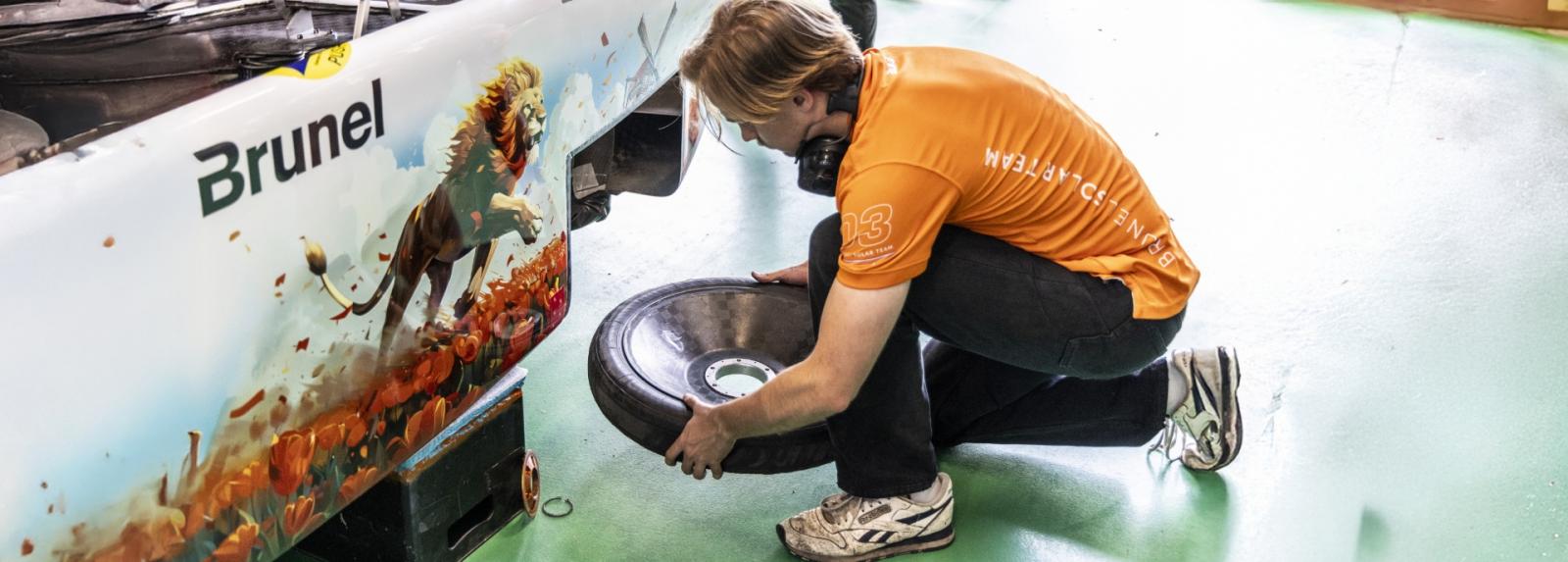
Circularity woven into performance
Many of Nuna 13’s competitive advantages don’t draw attention. Twaron Next® is one of them. Reinforcing the structure of the tire, it provides high tensile strength at low weight, helping maintain stability and efficiency over long distances in high-temperature conditions. It also supports a more circular material system, using recycled feedstock without compromising performance.
This is the first time an aramid with circular content has been used in a solar car tire. That result belongs to Bridgestone. The path to get there, however, was shaped through close collaboration and years of material development at Teijin Aramid. Twaron Next® combines trusted mechanical performance with circular content, offering a reinforcement solution that meets race-level demands without requiring changes to design, equipment, or processing.
“We’ve always seen our role as helping others go further. If we can enable breakthrough performance – in tires, cables, or ballistic protection – we’ve done our job. That’s how we measure impact.”
Hendrik de Zeeuw, Chief Commerical Officer
Twaron Next® is the latest step in a longer development story. At Teijin Aramid, legacy is shaped by what lasts. Since 1973, we have advanced aramids to meet critical demands across a wide range of applications. That began with a groundbreaking innovation in spinning technology to include recycled feedstock. In 2023, we expanded this process to an industrial scale to produce Twaron Next®. Today, it means enabling circular performance in one of the most demanding test environments in the world.
We didn’t design Nuna 13, but we support the ambition behind it. The drive to improve performance through lighter, stronger design is one we understand well. Our role is to contribute the materials and knowledge that help turn those ideas into working systems. When materials perform under real pressure and hold up through repeated use, they become part of something longer lasting. They become part of a legacy others can build on.
Engineered to last
Some of the biggest improvements to Nuna 13 came from practical, well-judged decisions made along the way. You see it in a car that stays stable in crosswinds because a second fin was added late in the design. In a tire made from recycled inputs that still grips at race speed. In a fiber that performs without fanfare but proves its value over thousands of kilometers. These outcomes are the result of small decisions, shared knowledge, and trust built gradually over time.
That is what each team, partner, and material leaves behind: a foundation others can build on by testing where it can go next.
Related news
As partners in a variety of industries that use our aramids in their products, Teijin Aramid actively participates in numerous events and trade shows. Discover more about these, along with updates on our work, here.

